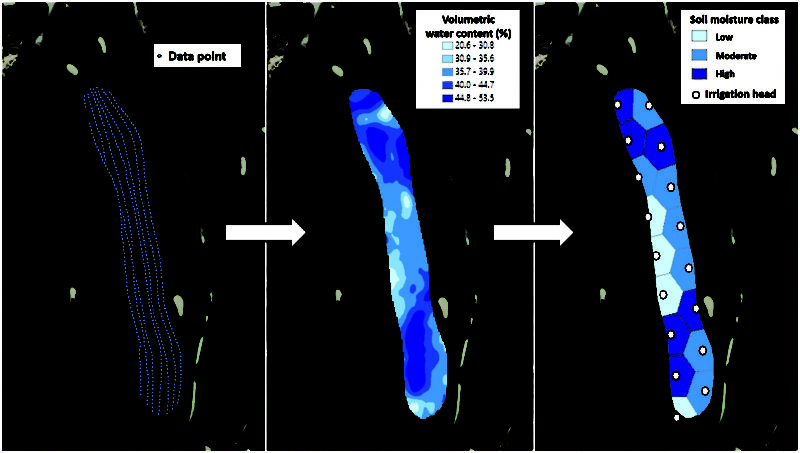Site-specific irrigation using sensors and mapping

Soil moisture classification process within delineated irrigation management zones. (Photo: Chase Straw)
A study was initiated at Brackett’s Crossing CC (Lakeville, Minn.) to encourage adoption of site-specific irrigation using in-ground soil moisture sensors and mapping technologies. We conducted course surveys to map soil moisture and place nine fairways into similar groups of three, in which each group is a replication in the study. One of three irrigation treatments will be applied in 2019 and 2020 to fairways within each group: soil moisture sensor-based, evapotranspiration (ET)-based or traditional.
For soil moisture sensor-based treatments, irrigation management zones have been delineated around heads within the fairways. We used soil moisture maps to create classes within delineated zones, and heads within each class will be programmed to run together. One Toro Turf Guard sensor has been installed within each soil-moisture class. Irrigation will be allowed within a class once plant-available water has been reduced 50 percent. For ET-based treatments, 70 percent of reference ET will be replaced every three days. For traditional treatments, we will ask the superintendents to irrigate normally. Total depth of irrigation applied will be recorded for each treatment, and totals will be quantified and compared on an area basis.
Normalized difference vegetation index (NDVI) will be used to evaluate turfgrass quality between treatments. Long-term goals of this research are to encourage adoption, acceptance and regular application of sensor and mapping technologies to reduce irrigation in the turfgrass industry.
Chase Straw, Ph.D., and Brian Horgan, Ph.D., are turfgrass scientists at the University of Minnesota. Chase Straw can be reached atcstraw@umn.edu for more information.










